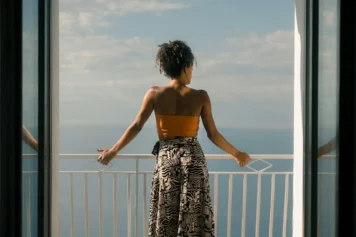“How much for your fastest camel?” I asked the tall man with the large turban and the drooping mustache.
Abdrahman smiled at me. “Come,” he said, and hurried off behind a mud-and-stick shed. There, regally posed, with a golden coat, stood Abrusa.
Abdrahman lowered the camel to his knees and pointed to me. “You ride,” he said, waving a wooden switch in my face. With little choice I threw a leg over the great beast — and remembering Lawrence of Arabia — wrapped my left knee around the saddle horn and hooked my instep behind my other knee. Abdrahman snapped his switch, and Abrusa lurched to his feet. Suddenly we were tearing across the desert.
Abrusa had a smooth gait (for a camel), and after finally heeding my incessant yanking on the reins, he spun and returned to his master. Abdrahman greeted me like a proud father.
“For you,” he beamed, “only 5,000 pounds.”
In a world of troubled places, Sudan, Africa’s third largest country, has a reputation as among those most troubled. The mention of Darfur conjures immediate images of atrocity and starvation. Border and oil disputes with the newly created South Sudan have been perpetuating strife that has continued virtually unabated for more than 50 years. Late last month, the presidents of Sudan and South Sudan signed an agreement that is expected to lead to the resumption of oil exports, though just about everyone who watches the area closely expects tensions to continue.
No danger seeker, I’d come to Sudan with Will Jones, who, with his company, Journeys by Design, runs a guiding service to many of Africa’s top destinations. He was on an exploratory trip to Sudan, and I had come to tag along.
We were intent on exploring the remote — and safe — northern region of the Nubian Desert, clustered with more pyramids than Egypt and nearly unvisited by outsiders. But more than any particular destination, I was interested in the people. I was curious to see how they lived with so much strife for so long. I wondered what effect it might have had on them.
A hot, dry wind blew as I stood under a large mahogany tree on the banks of the Blue Nile in the heart of Khartoum, the Sudanese capital. Not far off to my left, at a bend in the river, was the confluence of the Blue and White Nile that would flow like an umbilical cord through the desert north…
Read more: Andrew McCarthy, NY Times


